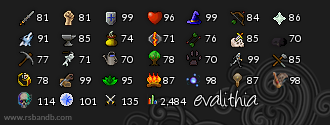Vity wrote:
Chris wrote:
Cliff Dude wrote:
Chris wrote:
And if you ever get into XHTML, you can use this validator to make sure it's 100% correct.
http://validator.w3.org/I hate those validators, I don't care if my pages don't have a doctype!
It looks wierd if I put the doctype in!
Basically, If you can see it right in IE, then it's fine.
No, it should be more, "If you can see it in Firefox," then it's fine, because IE lets some mistakes go by, whereas Firefox doesnt.
Yep, because when i was designing my website I saved my buttons as PNG. It looked fine on firefox, but there was white space in IE where transparency should have been
A better way to think of it, would be, 'If my page works on Internet Explorer, Opera
and Firefox, then it is fine.' Even though IE doesn't support standards and incorrectly renders websites, most users of Windows tend to use it, thus, a web developer should support it.
Next, a doctype is important to make a page valid! Without a doctype, a validator has no clue of whether a page is or isn't valid, different HTML versions have different specifications. For example, in HTML 4, the target attribute is valid, while in XHTML 1.0 Strict, it is not.
Thirdly, HTML and XHTML are very different languages. Firstly, HTML follows a basic SGML syntax, it also has badly defined standards, this means that pages made in HTML tend to be unsemantic. XHTML, on the other hand, is an XML based application, XML is a much more well formed subset of SGML. As the most common phrase to describe XHTML is, 'a reformulation of HTML in XML.' XHTML is now a W3C recommendation, therefore, it's worth learning.
Lastly, as I have to go, there is no reason whatsoever to learn HTML before XHTML! HTML teaches bad habits which will make XHTML documents invalid. Please, don't learn HTML before XHTML!
Just to add a bit of praise, keep going at those websites, and who knows, maybe one day you could be a master at it. Nice start!
Link of god:
http://validator.w3.org/














